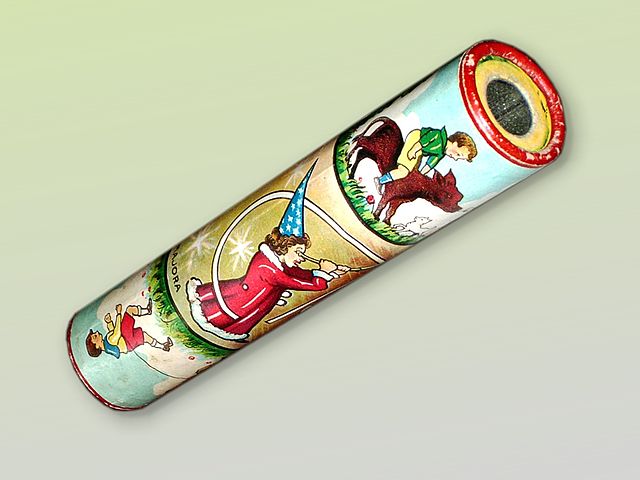A kaleidoscope is an optical instrument with two or more reflecting surfaces tilted to each other at an angle, so that one or more objects on one end of these mirrors are shown as a regular symmetrical pattern when viewed from the other end, due to repeated reflection. These reflectors are usually enclosed in a tube, often containing on one end a cell with loose, colored pieces of glass or other transparent materials to be reflected into the viewed pattern. Rotation of the cell causes motion of the materials, resulting in an ever-changing view being presented.
A toy kaleidoscope
A comparison of the mirror constructions of Kircher (left) and Bradley (right)
Patterns when seen through a kaleidoscope tube
Polyangular Kaleidoscope of R. B. Bate (with adjustable reflector angles), as illustrated in Treatise on the Kaleidoscope (1819)
Symmetry in everyday life refers to a sense of harmonious and beautiful proportion and balance. In mathematics, the term has a more precise definition and is usually used to refer to an object that is invariant under some transformations, such as translation, reflection, rotation, or scaling. Although these two meanings of the word can sometimes be told apart, they are intricately related, and hence are discussed together in this article.
Many animals are approximately mirror-symmetric, though internal organs are often arranged asymmetrically.
Seen from the side, the Taj Mahal has bilateral symmetry; from the top (in plan), it has fourfold symmetry.
Clay pots thrown on a pottery wheel acquire rotational symmetry.







